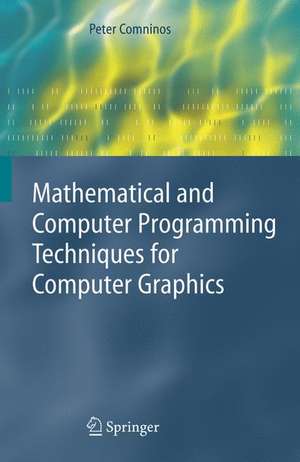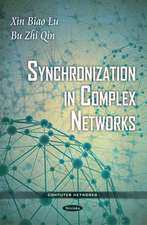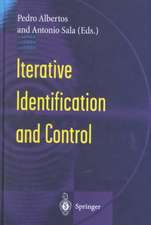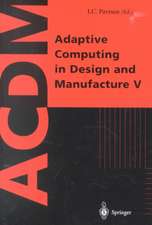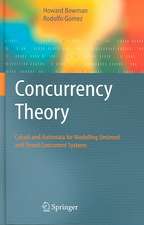Mathematical and Computer Programming Techniques for Computer Graphics
Autor Peter Comninosen Limba Engleză Hardback – 22 noi 2005
A simple but effective set of routines are included, organised as a library, covering both 2D and 3D graphics – taking a parallel approach to mathematical theory, and showing the reader how to incorporate it into example programs. This approach both demystifies the mathematics and demonstrates its relevance to 2D and 3D computer graphics.
| Toate formatele și edițiile | Preț | Express |
|---|---|---|
| Paperback (1) | 1000.38 lei 6-8 săpt. | |
| SPRINGER LONDON – 13 oct 2010 | 1000.38 lei 6-8 săpt. | |
| Hardback (1) | 1004.66 lei 6-8 săpt. | |
| SPRINGER LONDON – 22 noi 2005 | 1004.66 lei 6-8 săpt. |
Preț: 1004.66 lei
Preț vechi: 1255.82 lei
-20% Nou
Puncte Express: 1507
Preț estimativ în valută:
192.25€ • 205.57$ • 160.29£
192.25€ • 205.57$ • 160.29£
Carte tipărită la comandă
Livrare economică 18 aprilie-02 mai
Preluare comenzi: 021 569.72.76
Specificații
ISBN-13: 9781852339029
ISBN-10: 1852339020
Pagini: 567
Ilustrații: XX, 548 p.
Dimensiuni: 155 x 235 x 30 mm
Greutate: 0.9 kg
Ediția:2006
Editura: SPRINGER LONDON
Colecția Springer
Locul publicării:London, United Kingdom
ISBN-10: 1852339020
Pagini: 567
Ilustrații: XX, 548 p.
Dimensiuni: 155 x 235 x 30 mm
Greutate: 0.9 kg
Ediția:2006
Editura: SPRINGER LONDON
Colecția Springer
Locul publicării:London, United Kingdom
Public țintă
ResearchCuprins
Set Theory Survival Kit.- Vector Algebra Survival Kit.- Matrix Algebra Survival Kit.- Vector Spaces or Linear Spaces.- Two-Dimensional Transformations.- Two-Dimensional Clipping.- Three-Dimensional Transformations.- Viewing and Projection Transformations.- 3D Rendering.- Physically Based Lighting and Shading Models and Rendering Algorithms.
Recenzii
From the reviews:
"This book introduces the mathematics and related computer programming techniques used in computer graphics. … Using lots of code examples, the reader is encouraged to explore and experiment with data and computer programs and to master the related mathematical techniques. … This parallel approach of exposing the students to the mathematical theory and showing them how to incorporate it into example programs is the major strength of this book. This approach both demystifies the mathematics and demonstrates its relevance to 2D and 3D computer graphics." (Sonia Pérez Díaz, Zentralblatt MATH, Vol. 1090 (16), 2006)
"This book introduces the mathematics and related computer programming techniques used in computer graphics. … Using lots of code examples, the reader is encouraged to explore and experiment with data and computer programs and to master the related mathematical techniques. … This parallel approach of exposing the students to the mathematical theory and showing them how to incorporate it into example programs is the major strength of this book. This approach both demystifies the mathematics and demonstrates its relevance to 2D and 3D computer graphics." (Sonia Pérez Díaz, Zentralblatt MATH, Vol. 1090 (16), 2006)
Textul de pe ultima copertă
Mathematical and Computer Programming Techniques for Computer Graphics introduces the mathematics and related computer programming techniques used in Computer Graphics. Starting with the underlying mathematical ideas, it gradually leads the reader to a sufficient understanding of the detail to be able to implement libraries and programs for 2D and 3D graphics. Using lots of code examples, the reader is encouraged to explore and experiment with data and computer programs (in the C programming language) and to master the related mathematical techniques.
Written for students with a minimum prerequisite knowledge of mathematics, the reader should have had some basic exposure to topics such as functions, trigonometric functions, elementary geometry and number theory, and also to have some familiarity with computer programming languages such as C. The material presented in this book has been used successfully with final year undergraduate and masters students studying Computer Graphics and Computer Animation. A simple but effective set of routines are included, organised as a library, covering both 2D and 3D graphics – taking a parallel approach to mathematical theory, and showing the reader how to incorporate it into example programs. This approach both demystifies the mathematics and demonstrates its relevance to 2D and 3D computer graphics.
Written for students with a minimum prerequisite knowledge of mathematics, the reader should have had some basic exposure to topics such as functions, trigonometric functions, elementary geometry and number theory, and also to have some familiarity with computer programming languages such as C. The material presented in this book has been used successfully with final year undergraduate and masters students studying Computer Graphics and Computer Animation. A simple but effective set of routines are included, organised as a library, covering both 2D and 3D graphics – taking a parallel approach to mathematical theory, and showing the reader how to incorporate it into example programs. This approach both demystifies the mathematics and demonstrates its relevance to 2D and 3D computer graphics.
Caracteristici
Provides a comprehensive and detailed coverage of the fundamentals of programming techniques for computer graphics A good reference book to support implementation work Includes a simple but effective set of routines, organised as a library, that cover both 2D and 3D graphics – exposing students to the mathematical theory at the same time as showing them how to incorporate it into example programs Includes supplementary material: sn.pub/extras
